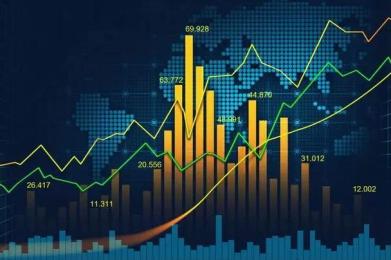Fundamental analysis is a method used by Forex traders to assess a currency’s inherent worth by evaluating the underlying economic, political, and social aspects that drive its demand and supply. Fundamental analysis, as opposed to technical analysis, which focuses on past price data and trends, seeks to discover the underlying worth of a currency and detect probable market mispricings. In this post, we will look at the core ideas of analysis, its tools and methods, and how they may be used to improve your Forex trading tactics.

Principles of Fundamental Analysis
Fundamental analysts think that the value of a currency is determined by a variety of macroeconomic factors and geopolitical events. The basic notion is that if a country’s economy is doing well, its currency would gain over time, while a faltering economy will result in currency depreciation. As a result, the following concepts underpin basic analysis:
a. Economic data releases, such as GDP growth, inflation, interest rates, and employment numbers, may have a substantial influence on the value of a currency.
b. Political events: Depending on market mood and risk appetite, political stability, government policies, and geopolitical conflicts may impact a currency’s strength or weakness.
c. Market psychology: Perceptions, expectations, and emotions of market players to economic and political events may cause short-term changes in currency prices.
Fundamental Analysis Essential Tools and Techniques
Fundamental analysts use a variety of methods and methodologies to assess a country’s economy and its prospective influence on its currency. Among the most regularly utilized approaches are:
a. Economic calendar: A list of forthcoming economic data releases, central bank meetings, and political events that may have an impact on currency values. Economic calendars are used by forex traders to keep updated and prepare for probable market-moving events.
b. Monetary policy and interest rates: Central banks utilize interest rates to manage inflation, stabilize economic growth, and impact currency values. Higher interest rates tend to entice foreign investment, resulting in currency appreciation, whilst lower interest rates might contribute to currency depreciation.
c. Data on inflation and unemployment: Inflation and unemployment rates are important measures of a country’s economic health. Rising inflation or high unemployment might indicate economic weakness and cause a currency to fall in value.
d. GDP (gross domestic product): GDP is the total worth of goods and services generated by a nation over a certain time period. Strong GDP growth implies a healthy economy, which may contribute to currency appreciation, while slow GDP growth can lead to currency depreciation.
The Use of Fundamental Analysis in Forex Trading
Follow these practical strategies to include fundamental research into your Forex trading strategy:
a. Keep an eye on the economic calendar for major data releases and events that may have an influence on currency prices. During these periods, expect higher market volatility.
b. Analyze interest rate differentials: To uncover possible trading opportunities, compare interest rates between currency pairings. Currency with increasing interest rates is expected to appreciate versus currency with lower or decreasing interest rates.
c. Examine economic indicators: Keep up to date on the economic condition of the nations whose currencies you trade. To evaluate the strength or weakness of a currency, examine important indicators such as GDP growth, inflation, and employment statistics.
d. Consider political developments and geopolitical tensions, which may have an impact on market mood and currency prices. Be mindful of the possible hazards and possibilities that these occurrences may provide.
